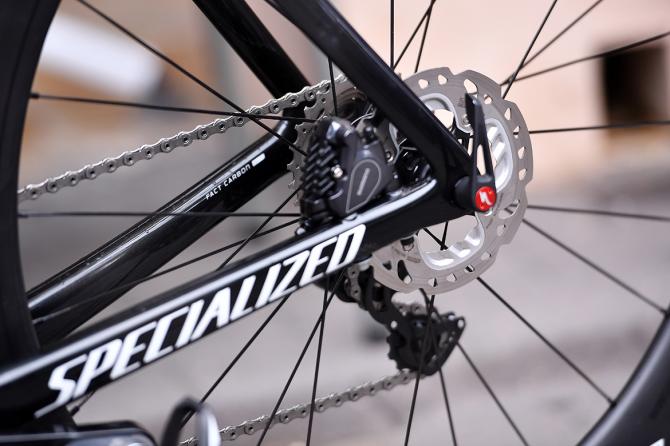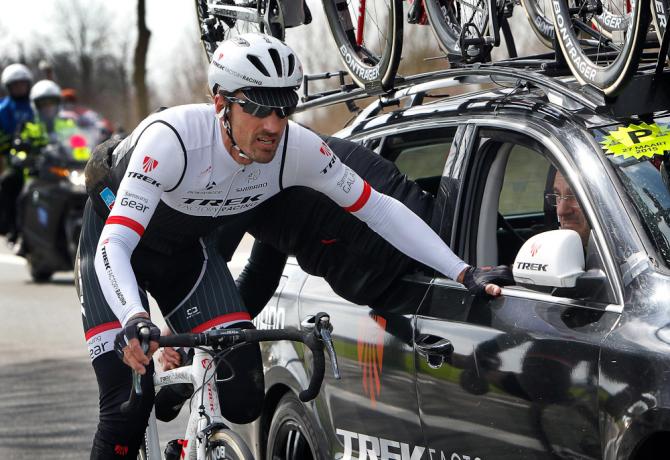Neutral Support companies brace for disc brake mayhem
Will a lack of standard disc brake systems impact races in 2017?
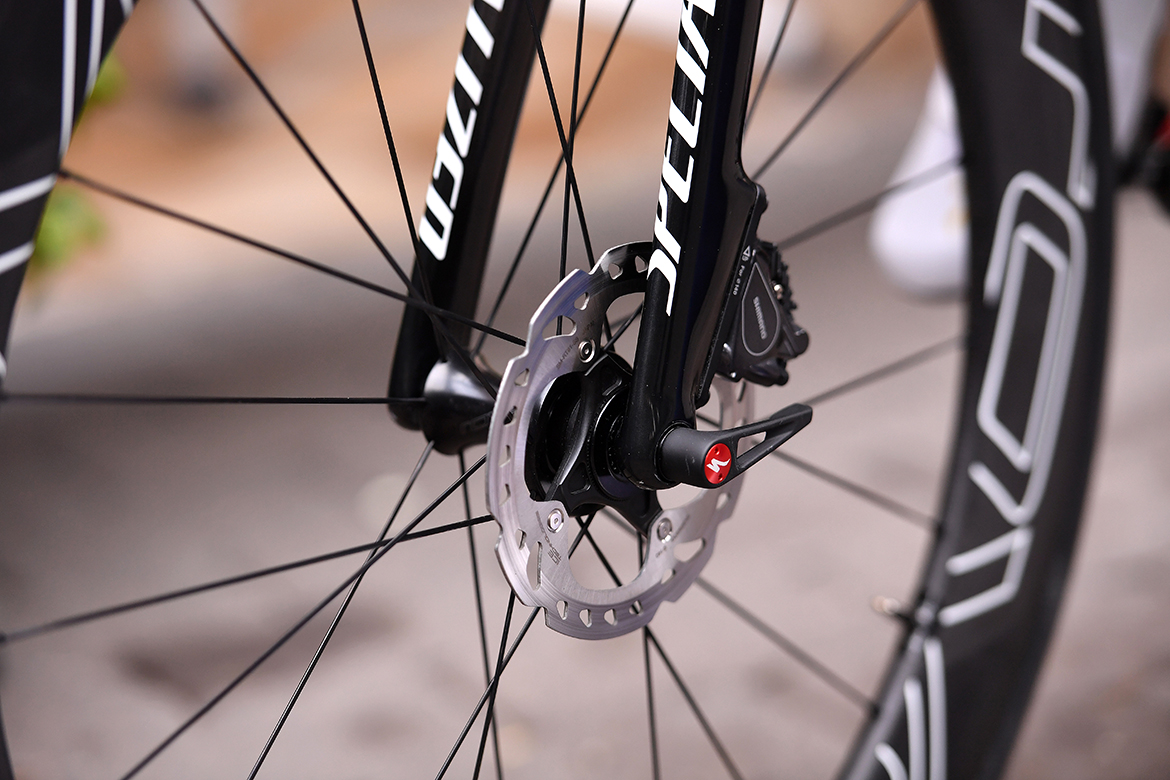
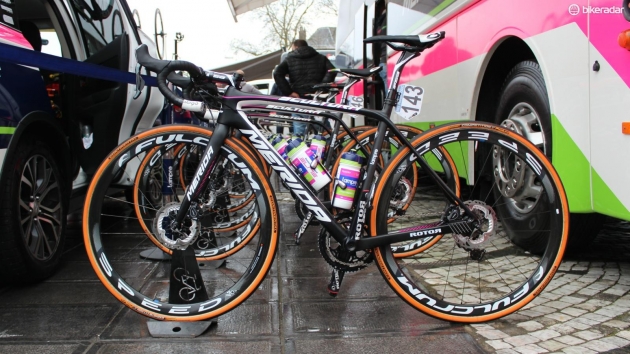
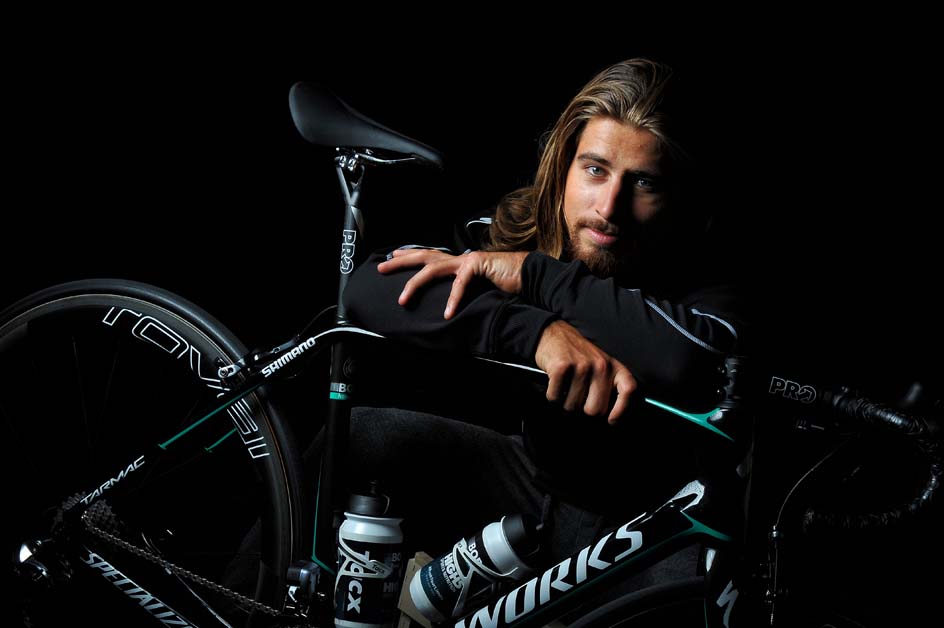
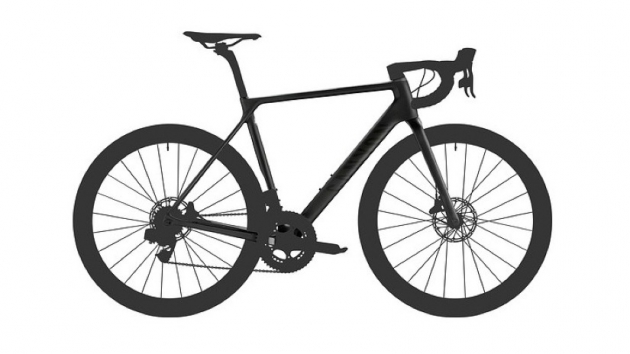
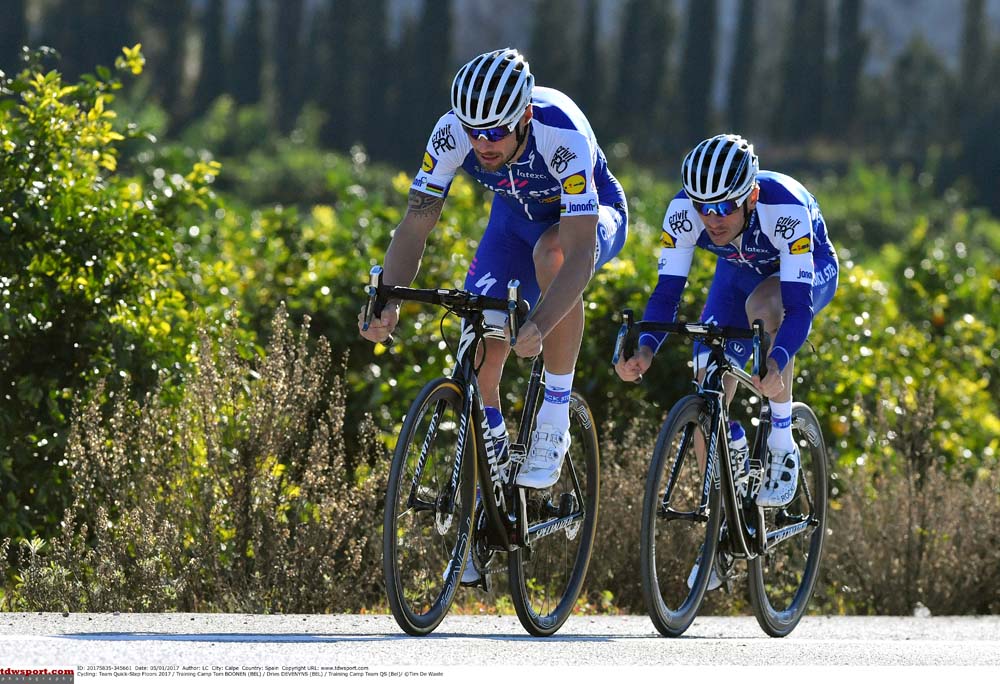
With the re-introduction of disc brakes into the road peloton in 2017, mechanical support is about to get trickier than ever. With dozens of possible wheel-brake combinations on the market, it may no longer be possible for companies like SRAM Neutral Support to carry enough wheels to support the whole peloton.
Disc brakes to return to road racing in 2017
UCI confirms disc brake retrial to begin January 1 in road events
Boonen gets disc brakes for his 2017 Specialized Venge
Cannondale-Drapac team to debut SuperSix EVO Hi-MOD disc bikes at Ruta del Sol
Sagan testing a Specialized Venge ViAS Disc bike before Tour Down Under
The upcoming Tour Down Under may not be the first test for disc brakes. So far the teams contacted by Cyclingnews have said they would be using traditional rim brakes, but as the season ramps up, there will be pressure from bike manufacturers to see their sponsored riders on new disc brake frames.
The wider use of disc brakes could be problematic because there is no industry-wide standard for disc brake equipment, and this is expected to cause significant headaches for neutral support, says Butch Balzano, of SRAM NRS, which provides neutral support for races like the Tour of California.
Disc brakes come in several different sizes - 140mm and 160mm are the main road sizes on the market - and the wheels are attached to the frame with either an old-fashioned quick release skewer/drop-out or with a more rigid thru-axle. Add in two different sizes of thru-axle (12mm and 15mm) and rear cassettes for Shimano/SRAM and Campagnolo and the combinations are too numerous to carry.
"Until the manufacturers settle on some standard (if I can say that without getting in trouble) it's frustrating for the neutral support guys because you can only carry so much," Balzano says. "We carry a heck of a lot of wheels.
"The bikes we use on the cars - the Specialized Tarmac - were all quick release (QR). We were carrying a lot of QR wheels, but you take Focus, they use thru-axle (TA). We saw a couple of Giants that are TA. Not every manufacturer has decided if they're going to use TA or QR."
Read More
The latest race content, interviews, features, reviews and expert buying guides, direct to your inbox!
- Disc brakes to return to road racing in 2017
- The risks and benefits of disc brakes in professional cycling
- UCI suspends road disc brakes in races after Ventoso injury
When speed matters, options get in the way
When a rider needs a wheel change at a critical point in a race, every second counts. A practised mechanic can come close to the speed of a QR rim brake wheel change on the right kind of disc bike, but knowing which wheel to get in the first place is an issue.
"It's extremely frustrating to run up to a rider and have the wrong wheel, but you can't run out of the car with six wheels in your hands," Balzano says.
If you manage to grab the right wheel, he adds, the change times aren't as bad as some might think.
"If it is a QR rear, it only takes me fractionally longer to change a rear disc wheel than a rear rim brake wheel because we've practised it so much," Balzano revealed. "So it isn't a big issue. If it's a TA, it's going to take a long time. We can still do wheel changes, but anyone with a disc it's going to take longer."
There are some efforts to smooth out the wheel change process: Focus developed something they call "Rapid Axle Technology (RAT), which Balzano says is "super fast - probably one of the nicest I've seen" - but although they are allowing other companies to use the design, it has yet to catch on in the industry.
Editor's note: Mavic is promoting its own Speed Release system, but it requires one QR dropout and one TA dropout, meaning manufacturers would have to adopt the system when building their disc brake bikes. Currently ENVE makes a compatible fork.
Unlike a QR, where you can open the lever and pop the wheel out of the frame, a thru-axle system involves unscrewing the axle and removing it from before taking the wheel out of the frame, then reverse with the new wheel. It's not Formula 1 pit crew speed, and can and will affect riders' races.
"It's not just Neutral Support [that suffers] - a team whose frames have that TA is in the same boat. Wheel changes are not something they'd want to contemplate - it would be faster to change the bike out if it's on the roof."
Specialized uses thru-axles with levers on its Venge Disc
Caliper chaos
The issues with disc brakes extend beyond choosing the right replacement wheel. After a crash or a wheel change, rim brake calipers were easy to adjust (and a 'rubbing brake pad' was a great excuse to hang onto the team car while the mechanic made a quick adjustment while the DS hit the gas). But with disc brakes, getting the adjustment right is far more difficult.
"This is where it gets really sticky: first you have to have the right size disc," Balzano says. "Most manufacturers are on either 140 or 160mm rotors.
"The problem is, there's no standard for where the disc is in space ... when you put a disc wheel into a frame that doesn't have the rotor in the same place, the rotor will rub completely against the pads. Now you have to re-center the caliper before you can send the rider on their way. That, as you can imagine, takes a lot of time."
Doing that while hanging out of the back of the team car is no longer an option.
"You can't do it on the fly on a disc brake - it's too low. There's one thing to grabbing a rim brake caliper - they're easily accessible from the car window, but the discs are about a foot off the road surface. There's no way you're getting down there. And the caliper is within an inch of the spinning spokes! You're not going to get your hand anywhere near that!"
Why disc brakes will take over
The only thing stopping disc brakes from taking over the road peloton entirely has been concerns over safety, but Balzano disputes the notion that disc brakes "can become giant knives", as Francisco Ventoso wrote after his Paris-Roubaix crash last year.
"The rider that said that - we come to find out that there were no riders anywhere around him in that crash that were on teams riding disc brakes."
"They are sharp, and manufacturers are taking steps to round the edges, but I think you're far more to be cut up by a chainring. They're so sharp. All bets are off in bike crashes. They're so varied and hard to predict. Sure, someone will get cut by [a disc], but plenty [of riders] have been cut by chainrings."
Despite last year's brief hiatus after Ventoso's crash, Balzano believes that disc brakes will become a fact of life in the road peloton, and they will replace rim brakes entirely at some point soon. There are plenty of positive aspects and a strong industry push toward this technology.
"I've been riding a disc bike for a year and can't go back. You get used to the modulation - it's not the stopping power," Balzano says. "Rim brakes stop bikes just fine, but when it's wet, nothing beats a disc. The modulation is nice - to be able to be going down the descent and be able to ride your brake with one finger and modulate your speed. You could never do that with a rim brake that easily. I love them; I can't go back."
All of the discussion and debate about disc brakes already happened in another discipline, he says - mountain biking. "Try and find a mountain bike without disc brakes now."

Laura Weislo has been with Cyclingnews since 2006 after making a switch from a career in science. As Managing Editor, she coordinates coverage for North American events and global news. As former elite-level road racer who dabbled in cyclo-cross and track, Laura has a passion for all three disciplines. When not working she likes to go camping and explore lesser traveled roads, paths and gravel tracks. Laura specialises in covering doping, anti-doping, UCI governance and performing data analysis.
